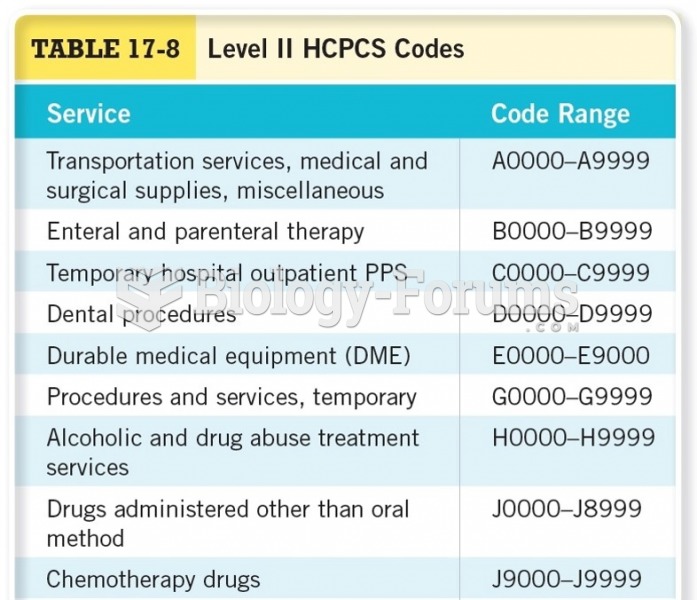|
|
|
Common abbreviations that cause medication errors include U (unit), mg (milligram), QD (every day), SC (subcutaneous), TIW (three times per week), D/C (discharge or discontinue), HS (at bedtime or "hours of sleep"), cc (cubic centimeters), and AU (each ear).
More than 50% of American adults have oral herpes, which is commonly known as "cold sores" or "fever blisters." The herpes virus can be active on the skin surface without showing any signs or causing any symptoms.
On average, someone in the United States has a stroke about every 40 seconds. This is about 795,000 people per year.
For pediatric patients, intravenous fluids are the most commonly cited products involved in medication errors that are reported to the USP.
The heart is located in the center of the chest, with part of it tipped slightly so that it taps against the left side of the chest.







